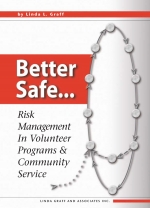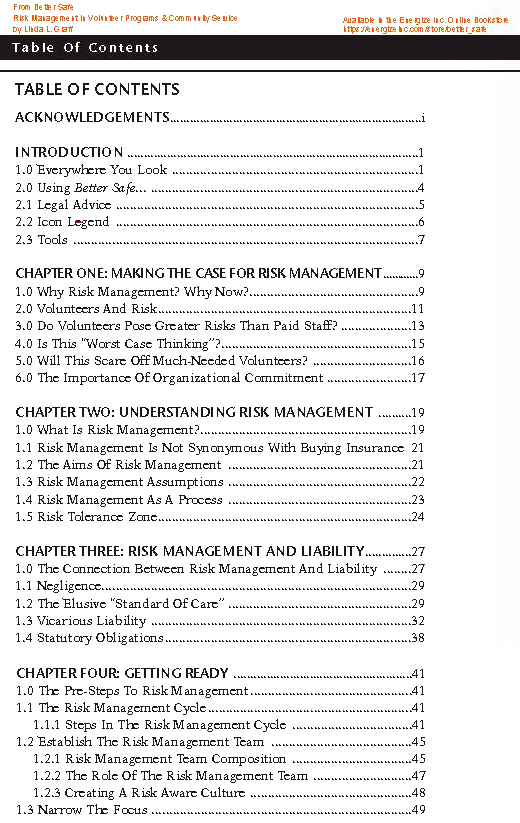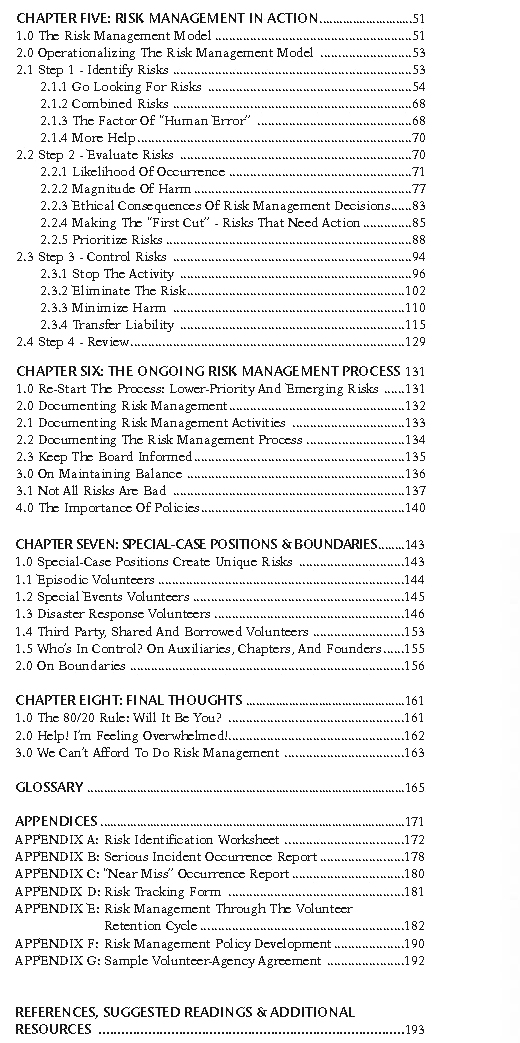Do volunteers pose a greater threat of injury or liability to organizations than paid staff? The answer may be both no and yes.
Experience proves that in the overwhelming majority of cases, volunteers perform their work to the highest standard. Most are dedicated, committed, conscientious, and trustworthy. Most nonprofit organizations could not survive, let alone thrive, without them.
The Alliance for Nonprofit Management, an association which promotes improved management and governance of nonprofits, reports that while volunteers can suffer injuries while engaged in volunteering, anecdotal evidence suggests that volunteer injuries are infrequent and minor, and volunteers do not appear to get hurt any more frequently or severely than paid staff. (The Alliance for Nonprofit Management, 2001b: 1). However, because so many nonprofit organizations involve many more volunteers than paid staff, sheer numbers of volunteers in action will most certainly increase the odds that something will go wrong somewhere.
The Alliance goes on to say that there may be a greater risk ''that the volunteer harms another person, such as a client, another volunteer, or employee." (Ibid.) Since an organization's failure to appropriately screen or place a volunteer, or to monitor a volunteer's action (which results in such an injury) might be construed by the courts as negligence, a "negligence claim can be more costly than paying for the medical expenses of a volunteer's minor injury." (Ibid.)
Remember also, that injuries to persons and objects are not the only perils to contend with in volunteer and community service programs. Volunteers have the potential to damage an organization's reputation which, for a nonprofit, can mean the loss of a most valuable asset -- public trust. Most organizations are aware that misdeeds by their paid staff can reflect badly on the organization to ruinous effects. Unfortunately, nonprofits are less aware of the devastation that can flow from the misdeeds of their volunteers. The "they're just volunteers" attitude serves to mask the real risks that a well-intended but inappropriately placed volunteer can pose to even the best, well-respected, and otherwise well-managed nonprofit organization. Hence, volunteers may expose organizations to liability because there are so many of them and because they tend to be overlooked.
Consider this illustration:
"THEY'RE JUST VOLUNTEERS"
The executive director instructed the manager of volunteers to eliminate performance evaluations for volunteers because he thought it was insulting to question the ability of people who were "volunteering" their time. These volunteers are in an advocacy (guardian ad litem) position for older persons in nursing homes. Theirs is very responsible work which demands special skills, and just the right mix of diplomacy and tenacity. Now, no one checks to see if they are doing their work well.



